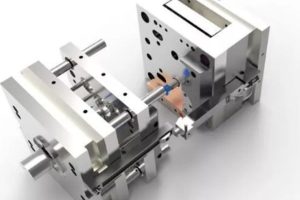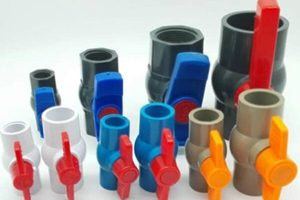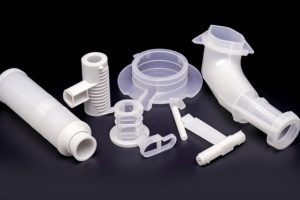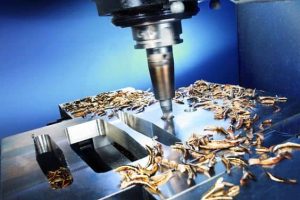Introduction
Injection molding is a widely-used manufacturing process for plastic parts. It involves injecting liquid material into a mold cavity, where it solidifies and takes on the shape of the mold. This technique can be employed to craft items such as toys, medical devices, and automotive parts.
One of the key variables in injection moulding is cycle time, or how long it takes to complete one mold cycle from filling with molten material to ejecting the finished product. Reducing cycle time is beneficial for manufacturers since it can result in increased productivity, lower energy and labor costs, as well as greater profits. In this article, we’ll look at strategies for shortening injection molding cycle times and optimizing this step of the process.

II. What Affects Injection Molding Cycle Time
- Cooling time: The time required for the material to cool and solidify in the conventional cooling channel cavity affects cycle time. Longer cooling times can increase cycle time, while shorter cooling times can reduce it.
- Injection time: The time required to inject the molten material into the mold cavity also affects cycle time. Longer injection times can increase cycle time, while shorter injection times can reduce it.
- Filling time: The time required to fill the mold cavity with molten material affects cycle time. Longer filling times can increase cycle time, while shorter filling times can reduce it.
- Packing stage: The time required to apply pressure to the material after it has been injected into the mold cavity affects cycle time. Longer packing times can increase cycle time, while shorter packing times can reduce it.
- Mold closing and ejection time: The time required to close and open the mold affects cycle time. Longer mold closing and ejection times can increase cycle time, while shorter times can reduce it.
- Mold-reducing nozzle force: The force required to inject the material into the mold cavity affects cycle time. Higher nozzle force can reduce cycle time, while lower force can increase it.
- Material temperature: The temperature of the molten material affects cycle time. Higher temperatures can reduce cycle time, while lower temperatures can increase it.
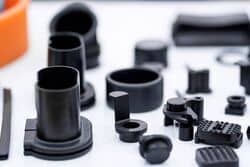
Each of these factors plays a significant role in determining cycle time in injection molding, and optimizing each one can lead to faster cycle times and increased efficiency.
III. Strategies to Reduce Injection Molding Cycle Time
Reducing cycle time is essential for manufacturers looking to increase productivity and profitability.
Here are three additional tips for reducing cycle time in injection molding:
Optimizing cooling time and channels
Optimizing cooling time and channels is critical for reducing cycle time. Using efficient cooling channels can cool the material more quickly and reduce overall cycle time.

Reducing unnecessary movements
Eliminating unnecessary movements during the injection molding production process can reduce cycle time. These movements can be avoided by designing injection molds with the right configuration and using appropriate process conditions.
Using conformal cooling channels
Conformal cooling channels are designed to follow the shape of the mold and can cool the material more efficiently. Using conformal cooling channels can lead to faster cycle times and better part quality.
Selecting the Appropriate Material and Wall Thickness
Making the correct material selection and wall thickness can help reduce cycle time. Utilizing materials that solidify quickly helps cut back on cooling time, while thinner walls also contribute to quicker cooling.

Maintaining Injection Molding Machines Correctly
Regular maintenance of injection molding machines is essential for reducing cycle time. Cleaning the machines helps prevent breakdowns and guarantees they are running optimally.
Minimizing Pause and Injection Time
Reducing pause time and injection time can help cut down on cycle time. By setting an appropriate pause and injection timing, molten material is injected and solidified within the mold as quickly as possible.
By following these strategies, manufacturers can reduce cycle time and boost efficiency in their injection molding process, leading to higher profitability and productivity.
IV. The Impact of Cooling Time Optimization
Cooling time is an integral factor in the injection molding cooling process, as it determines how long the material must cool before solidifying in the mold cavity. The significance of cooling time cannot be overstated since it directly affects part quality and cycle time.
Optimizing cooling time is one of the most efficient methods to reduce cycle time in injection molding. By improving cooling rates, manufacturers can speed up material cooling and solidification, significantly cutting down on cycle time.
Optimizing cooling time requires several techniques, such as:
Enhancing Cooling Fluid Flow Rates: Altering the flow rate of cooling fluid through cooling channels can accelerate material cooling, cutting down on cooling time and overall cycle duration.
Utilizing Molds With Appropriate Cooling Channels: Molds designed with proper cooling channels can help cool materials more rapidly, cutting down on cooling time and improving part quality.

Monitor Material Temperature During Cooling Stage: Monitoring material temperatures during cooling can help manufacturers determine when it has solidified enough to be removed from the mold, saving unnecessary cooling time.
Reducing Mold Damage and Hot Spots: Minimizing mold damage and hot spots can help cool materials more evenly, cutting down on cooling time and improving part quality.
By optimizing conformal cooling channel cooling time, manufacturers can significantly reduce cycle time, enhance part quality, and boost efficiency in their injection molding process.

V. Conclusion
In conclusion, reducing injection molding cycle time is a critical factor for manufacturers looking to increase efficiency and profitability. By implementing strategies such as optimizing cooling time and channels, reducing unnecessary movements, using conformal cooling channels, choosing the right material and wall thickness, proper maintenance of injection molding machines, and minimizing pause time and injection time, manufacturers can significantly reduce cycle time.
Cooling time optimization is one of the most effective ways to reduce cycle time in injection molding, and techniques such as improving cooling fluid flow rates, using well-designed molds with proper cooling channels, monitoring material temperature during the cooling stage, and reducing mold damage and hot spots can help to optimize cooling time.
The potential benefits of reducing cycle time include lower energy and labor costs, increased production capacity, and increased profitability. By optimizing the injection molding process, manufacturers can produce high-quality parts at a lower cost, improving their competitiveness in the market.
In conclusion, manufacturers need to optimize their injection molding process continually. By adopting the strategies outlined in this article, manufacturers can reduce cycle time, improve part quality, and increase efficiency, resulting in increased profitability and competitiveness in the market.

